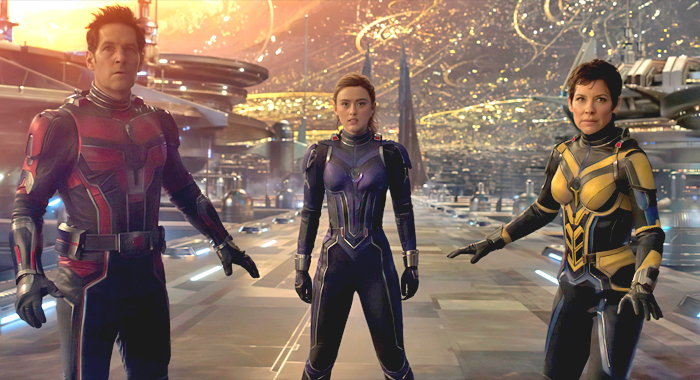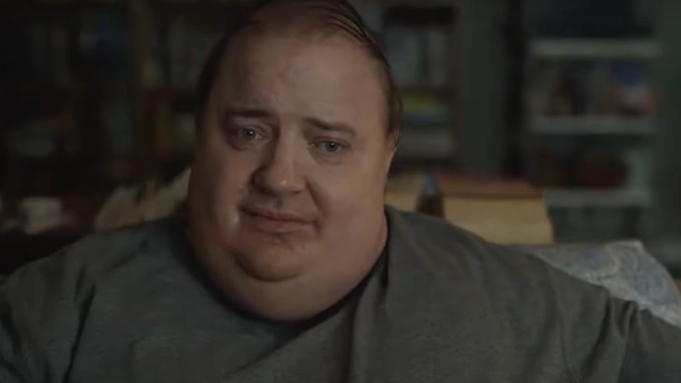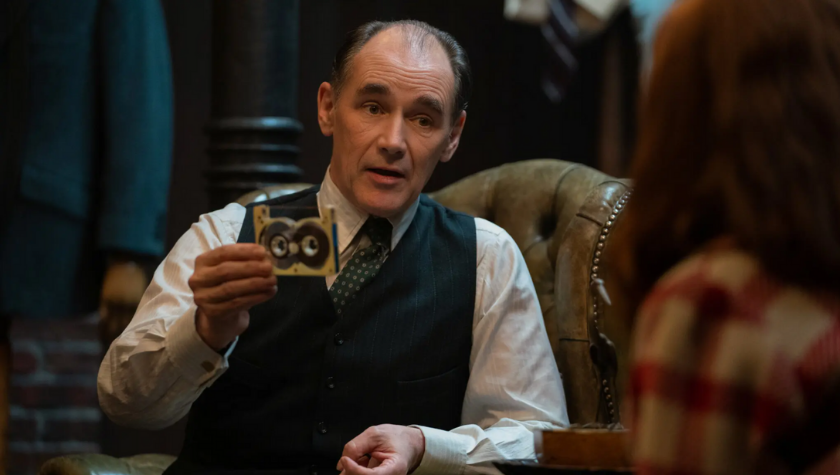5 Screenwriting Takeaways: ‘The Outfit’ is a thrilling one location crime drama
March 25, 2022
PHOTO COURTESY OF NICK WALL / FOCUS FEATURES
Leonard is not a tailor. He’s a cutter. There’s a difference and he corrects people when they call him a tailor. In The Outfit, Leonard, who also goes by the nickname English by the mobsters who come into his Chicago shop, minds his business and hardly takes notice of the men who come in and drop envelopes in a box in the back of his workspace. It’s an agreement that seems to work, until one fateful night when he must protect a briefcase that several other gang members and police are trying to find. Leonard must outsmart the mobsters and try to live to see the next day.
The Outfit is a subtle thriller that takes place in one location and focuses on a single individual who doesn’t say much. This makes the words he does speak carry extreme importance. His secretary is a woman who he sees as somewhat of a daughter-figure, but who has also entered into a relationship with one of the mobsters, causing her to be directly involved with heels Leonard is trying to outwit.
The Outfit stars Mark Rylance, Zoey Deutch, Dylan O’Brien, and Johnny Flynn. It was directed by Graham Moore who also co-write the screenplay with Johnathan McClain.
Here are your five screenwriting takeaways from The Outfit.
1. Define your main character
We hear Leonard (Rylance) through narration at the beginning of the film as he observes the gentlemen coming into his Chicago tailoring and clothing shop. The audience learns how Leonard sees his world and the people who walk into his life. They also learn that he is an observant man; as if he’s always listening and never talking.
He moves about his store with ease and precision, sharpening his shears and meticulously marking fabrics to make suits. The audience may not know what he’s doing exactly, but we know he is an expert at it. Everything in his life is clean and tidy.
Within the first few minutes of the film, we understand the main character, what’s important to him and what he chooses to observe, and what he looks away from. Writers can see how the filmmakers show, not necessarily tell, who Leonard is and how they build an expectation of what the character can do for the audience.
2. The father/daughter relationship
The audience can see who Leonard is internally and how he keeps his distance from the people who come into his shop. He’s a craftsman whose focus is on his work and creating the suit around the gentlemen who come in.
But how does he feel about the closest person in his life? The relationship between Leonard and Mable (Deutch) is very playful, as if they were father and daughter. Near the beginning of the film, the two are folding pocket squares and chatting about Mable’s dating life, in which she flat-out says that he’s not her father. Leonard accepts this because it’s true, but it still doesn’t prevent him from caring for her as if he were.
This pocket square folding scene provides exposition and insight into the lives of the main characters, how they interact with one another and set up conflicts in the coming scenes, especially when Leonard learns of her relationship with Richie (O’Brien).
3. Opposites attract
One way to build conflict is to have opposite forces working against each other. In The Outfit, there is the reserved, passive Leonard opposite almost everyone else. Mable is chatty and speaks quickly, Richie and Francis (Flynn) are also fast-talkers, aggressive in nature, and used to showing force.
Leonard is a British immigrant living in Chicago, a point made clear toward the conclusion of the film.
But there are also other opposites used as metaphors throughout the movie. Leonard’s shop is tidy with everything put in its place. When folding pocket squares with Mable, his are tenderly folded while her squares are skewed. Whenever the mobsters enter his place, things start to turn chaotic, especially when one shows up at the door shot, turning Leonard's neat world upside down.
There are the opposites of seemingly good, law-abiding citizens like Leonard and Mable versus the mobsters, as well as the tools in their respective professions. Leonard’s cutter tools are used with precision and to create whereas the others use guns and bullets to destroy. These opposites create underlying conflict and pit two types of forces against another.
4. A haunted past
Each character in the film has a somewhat haunted past and the lives they lead today aren’t what they seem. Leonard, for instance, is shrouded in mystery. He comes off innocent enough, but a confession in the middle of the film makes both the character he is speaking with and the audience wonder if it’s true. Meanwhile, quick flashbacks of a fire indicate that something from before his time in Chicago still haunts him.
In fact, all the characters in The Outfit are fighting something that haunts them. Mable's father was taken away from her when she was young and something inside her inspires her to travel the world. Richie lives under the shadow of his father— the leader of the crime syndicate. His partner’s loyalty is to Richie’s father, for whom he took several bullets.
Writers can see how these backstories give the characters dimension and goals. They’re all heroes of their own story and not just there to add to the chaos.
5. Just one location
The Outfit would make a great play. It takes place in one location — Leonard’s shop —and within a few rooms. The audience can learn the layout quickly, put them in the same spot as the characters, and make them feel like they are there. By the end of the film, the viewer knows every spot in this location.
The challenge filmmakers have with a single location is how to make it interesting. How do you create enough compelling shots to tell a story?
Writers can see how the filmmakers of The Outfit pull it off, often using separate rooms as if they were different locations entirely and keeping the story moving by having characters enter and exit in ways that provide tension.
The Outfit is currently playing in theaters.
Written by: Steven Hartman
Steven Hartman is an award-winning, optioned screenwriter. He was a Top 5 Finalist in Big Break’s Historical Category in 2019 and won Best Action/Adventure in Script Summit’s Screenplay Competition in 2021. He holds a Bachelor of Arts degree from Columbia College and had internships at Jerry Bruckheimer Films and Village Roadshow Pictures. Steve is a full-time writer and creative video producer by day and a screenwriter and novelist by night.



